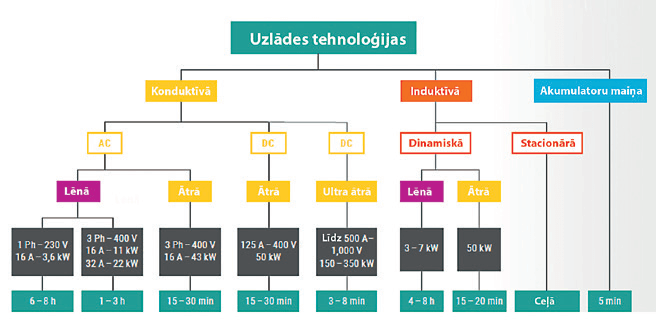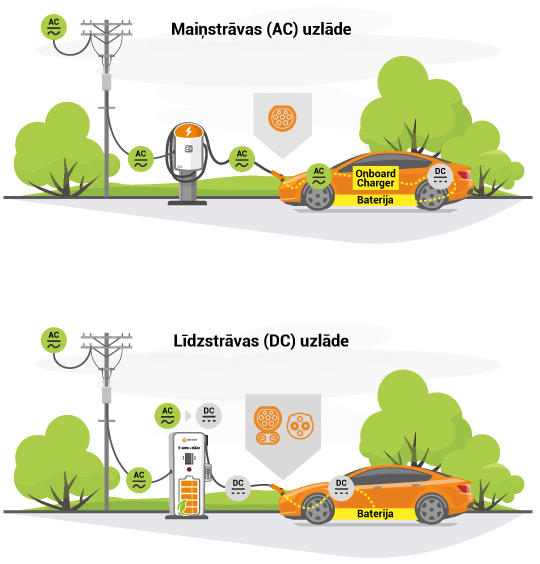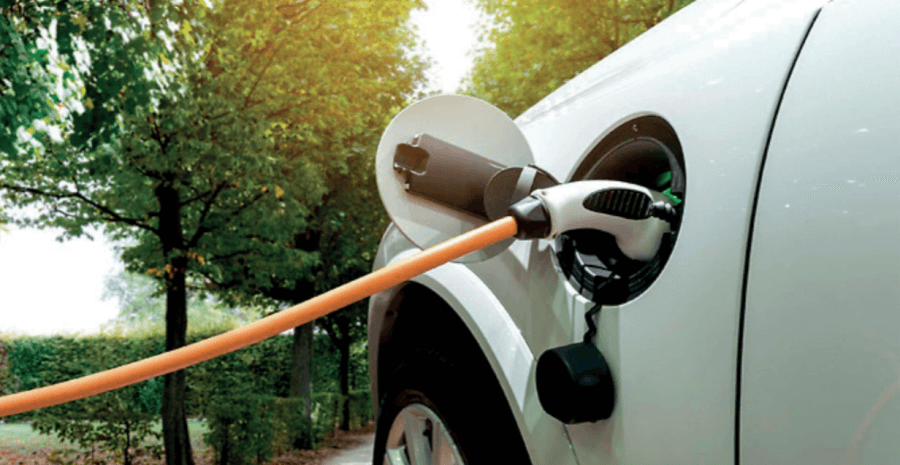Electromobility has rapidly entered our daily lives, offering new opportunities and solutions for more sustainable and environmentally friendly behavior.
The number of electric vehicles in traffic is growing faster, and public confidence in electric cars is also growing. There is a gradual change in habits and a move towards the choice of electric cars for the needs of both families and companies.
How fast is electromobility entering our daily lives?
Electricity Producers Association Eurelectric has pointed out that the fastest electrification is in the passenger car segment, with a share of 93% by 2050, while electrification in the transport sector as a whole must reach at least 63% by 2050. Inventories of electric cars have also grown rapidly in recent years, reaching one million units in 2020. The largest number of new electric cars was registered in Germany, France and Sweden in 2020, while the Central European countries still have relatively low rates, while Northern Europe has the highest penetration rates.
The use of electric cars is growing in Europe, and naturally this is also happening in Latvia. Although their number in traffic is currently small, it is growing rapidly. There are currently 1,606 electric cars registered in Latvia, which is 26% more than at the beginning of the year, and their number has doubled compared to the beginning of 2020.
Public attitudes are also improving: 82% of Latvians support the use of electric cars, and one in four plans to replace the current fuel-consuming car with an electric car in the coming years. At the same time, as the number of both electric cars and charging points grows, the development of electromobility is accelerating.
Europe has set ambitious targets for reducing greenhouse gas (GHG) emissions. Statistical data show that in 2018, 28.6% of GHG emissions in Latvia were caused by transport. The Ministry of Environmental Protection and Regional Development is currently planning to implement support measures for the purchase of low-emission and zero-emission vehicles, as a specialized auctioning tool has been available in Latvia for a long time, aimed exclusively at achieving climate policy goals. The planned funding is EUR 10 million, which could be available from the beginning of 2022 until the end of 2023. The final beneficiaries will be individuals – residents, state and municipal institutions, state and municipal capital companies.
The European Green Course also states that every family in Europe must be able to use an electric car without worrying about the location of the next charging station. It is expected that in the European Union by 2025 there will be at least one million charging points instead of the current ~ 174 thousand, but in Latvia their number will be at least 1,000 after five years, and 3600 after 10 years.
Already this year, the number of public charging points will exceed 250 ports. Last year we saw the sharpest increase in the number of electric car models, and it is expected that even more new electric car models will enter the market in the coming years. All the leading carmakers have announced ambitious plans to develop a variety of electric cars – from small city cars to sports models. Although the purchase price of new electric cars is high, some forecasts suggest that the cost of producing new batteries will continue to fall by 58% by 2030, so that the price of electric cars and internal combustion engines could level off in the coming years.
How to choose the most suitable electric car model
In the past, it could be said that it is almost impossible to find an electric car that meets your needs, but now the number of models is growing rapidly. How to choose the most suitable for you in the wide offer? First of all, we recommend evaluating who the electric car will be used for and what are the daily travel habits: how much distance is covered by the car on a daily basis?
Electric cars registered in Latvia travel on average from 13,000 to 21,000 km per year, or a distance that is commensurate with the distance traveled by internal combustion cars. Research shows that the absolute majority or 93% of Riga and Pieriga drivers measure a route that does not exceed 100 km on a daily basis, including more than half or 66% – only 50 km. On the other hand, the distance traveled on holidays increases only slightly – mainly at the expense of residents who drive 50 to 200 km by private car. So we can conclude that the electric car is perfectly suited to meet such daily use needs.
Identifying needs and habits not only allows you to prepare for the transition from an internal combustion engine car to an electric car, but also allows you to choose the most suitable electric car model for your needs. Before buying an electric car, it is necessary to clarify several issues:
- how often do you use the car
- how far do you cover a typical working day
- how often and how far do you travel,
- when, where, how long the car is parked,
- whether it is possible to charge an electric car in the house,
- whether the car can be charged at work,
- where are the nearest public charging points?
Not everyone needs an off-road car model, and not everyone needs a compact car. If you travel around the city on a daily basis, a small electric car may be more suitable. On the other hand, if it is used by the whole family or the company has a certain specificity – an electric sports SUV.
When choosing an electric car model, it is also important to choose a battery with a suitable capacity, which ensures autonomy or total mileage with one full charge. Initially, a logical conclusion could be: the larger the battery, the greater the autonomy (but also the higher the purchase price of the car). If you travel within the city on a daily basis, a smaller battery may be sufficient. On the other hand, if trips regularly extend outside the city limits and longer distances are measured on a daily basis, a larger capacity battery may be more suitable.
But it may not be – the battery capacity must be assessed not only in conjunction with driving habits, but also with charging capacity. The question to start with: where will electric cars be charged? At home, at work, at public charging stations? The car spends 95% of its time stationary, this downtime should also be used for charging. If charging is free and easy on a daily basis, you can choose a model with a smaller battery, and if charging does not provide free mobility, you must purchase a model with a larger battery capacity.
Regardless of the model of electric car you choose, it must meet your everyday needs, so when buying an electric car, you must take into account not only the aesthetics of the car, but also the researched daily driving habits and charging options.
Electric car charging development and solutions
Various technologies are available for charging electric cars. The most common solution, which is also supported by most electric car models, is AC and DC charging via a wired connection. The wireless solution is currently being studied, for example, in highway applications. On the other hand, battery replacement is suitable in some cases where speed is critical, such as in car racing.

Alternating current (AC) is available in the household electrical network, while direct current (DC) is used to ensure the operation of many electrical equipment. Charging an electric car battery also requires direct current, so the alternating current flowing in the mains must be converted to direct current. In the case of fast AC charging, the conversion of current from AC to DC takes place in the charger built into the electric car. Therefore, the charging speed of electric cars is affected not only by the power connection capacity, but also by the capacity of the built-in charger.
In turn, in direct current or fast charging stations, the electric car is charged with direct current, meaning that the conversion of alternating current into direct current does not take place in the charging device built into the electric car, but the charging station itself acts as a current converter. As a result, an electric car battery can be charged several times faster at a DC charging station.
We often hear that we need more fast charging stations. But is this always the best solution? In most cases, no, different stations are suitable for different needs. Studies show that up to 80% of charges will take place at home or in private car parks, while the remaining 20% will take place during the day in a public space. In daily mode, when we cover 100 to 150 km a day, the needs will be fully met by alternating current or slow and medium fast charging solutions. Otherwise, they will also be cheaper. On the other hand, fast charging stations serve the needs of longer journeys, when we want to charge more energy in a shorter period of time, therefore the charging service will also be more expensive.

As the mileage of an electric car increases, so does the capacity of the batteries that need to be charged. From a household socket with a capacity of up to 3.6 kilowatts (kW) at night, for example in 10 hours, the battery can be charged to 36 kilowatt hours (kWh). So, if the electric car battery is 40 kWh or less, then such a solution may be appropriate. But if the battery is 64 kWh or more, only half or less of the battery capacity can be charged in 10 hours or at night. Of course, keep in mind that we don’t use up the entire battery every day.
If the electric car needs to be charged faster and the appropriate connection capacity is available in the home, it is possible to use a special charging device or Wallbox for charging. Such a device will ensure that more power is used for charging, so it will be possible to charge the electric car at least twice as fast. First of all, everyone has to know their own driving habits and the required amount of charging, for example, an electric car with a large battery does not need to be charged every day – depending on the driving habits, it can be done every other day, etc. tml. The challenge for the next stage of development, which Elektrum is currently working on, is to expand the charging service capabilities and user functionality, as well as to provide connections in urban and suburban areas, places where large numbers of people congregate but the charging infrastructure has not yet developed. center, places of work, entertainment, sports and trade, as well as residential areas and possible park and ride transport assembly points. This is not only about Riga, but also other Latvian cities.
Closing
Every family or business transfer to an electric car today makes our cities quieter and cleaner. Electromobility, on the one hand, tends to solve the problem of high emissions in Latvian transport, on the other hand, anyone who drives or has tried an electric car will agree that such movement is comfortable, quiet and dynamic.
Elektrum, By developing the infrastructure of the electric car charging network, care will be taken to ensure that your car can still be charged conveniently, quickly, modernly and with green, environmentally friendly energy.
Publication also in the magazine “Energy & World”


